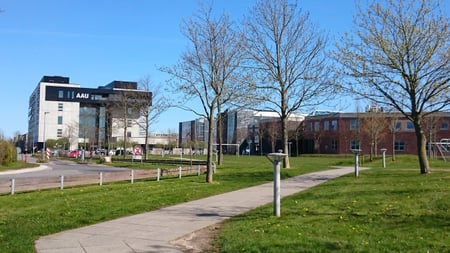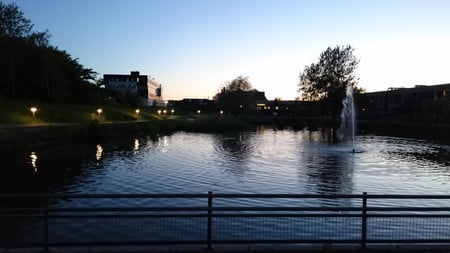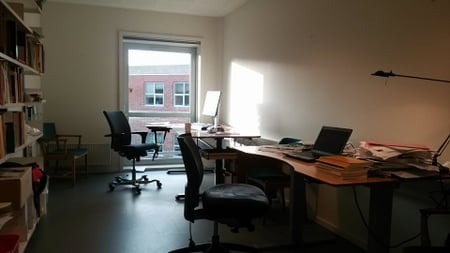From 20 March 2017 to 1 February 2018 I am staying at the Aalborg University Centre for Innovation and Research in Culture and Living in the Arctic (AAU-CIRCLA) in the Kingdom of Denmark, thanks to the support given to me under the ArCS’ program for overseas visits by young researchers (See photos 1, 2 and 3).
The AAU-CIRCLA is a research group that mostly consists of researchers affiliated with the Aalborg University Department for Culture and Global Studies and aspires to be not only Danish, but a world stronghold in research on Greenland and the Arctic. While a number of institutes that conduct research on the Arctic are grounded in natural sciences, the AAU-CIRCLA’s main focus is on humanities and social sciences, including military and security issues (the so called “high politics”). As an example of unfettered research, a special mention is given to the joint research project they host: “The Politics of Postcoloniality and Sustainability in the Arctic” (POSUSA), which stands on its own as a project in the field of humanities and social sciences (meaning that it does not require a tie up or coordination with natural sciences).
Beside my host Lill Rastad Bjørst, also affiliated with the AAU-CIRCLA are Ulrik Pram Gad, Robert Christian Thomsen and others - all experts who are the driving force behind the world’s academic research on the Arctic in the field of humanities and social sciences. Through their monthly seminars (I have presented in May and am scheduled to do so again in November) and a joint seminar series with the University of Copenhagen entitled “Arctic Politics Research Seminars,” they have created an environment that enables effective information sharing (See one such seminar scheduled for December). They are also proactive in terms of training future researchers and their study program, which aims to achieve a systematic understanding of the Arctic and produce a significant output, is rich in content, encompassing everything from the anthropological history of the Arctic to the morphological analysis of its globalization.
The Aalborg University Arctic (AAU Arctic) is a collaborative research platform which presents a venue for the collaboration of academic fields that are adjacent to each other, including natural sciences. Annual conferences that enable the exchange of opinions are held under its framework. At the beginning of 2016, the halting of the admission of new students and the en masse layoff of the staff at the University of Copenhagen Institute of Eskimology, which was world-renowned as an academic base for the study of the Arctic and Greenland, became the topic of much conversation and concern. At the AAU-CIRCLA and AAU Arctic, however, efforts for creating an environment for a multilateral analysis of the drastically changing Arctic are still continuing, irrespective of the insecure conditions in which Arctic and Greenland studies in Denmark find themselves now despite the fact that Denmark is classified as a constituent member of the “Arctic 5”, the group of nations that lie on the shores of the Arctic ocean.
In such circumstances I am currently pursuing research, the topic of which is the history of the Danish state’s policy toward the Arctic. The goal of my research is to, with reference to the 2008 report “The Arctic at a Time of Transition (Arktis i en brydningstid)”, empirically shed light on the thinking and the background behind the “Kingdom of Denmark’s Strategy for the Arctic 2011-2020 (Kongeriget Danmarks Strategi for Arktis 2011-2020)”. As will be explained later, my research is moving towards visualizing a portion of the overall political power balance in the Arctic through the inductive method.
Why the Danish state? This is because mainland Denmark, although it does not possess geographical proximity to the Arctic Ocean, enjoys the rights and benefits given to the actors located north of the 45th Northern Parallel; because it is the only entity that enjoys maritime rights and benefits thanks to the fact that, through its autonomous territory of Greenland, it possesses legal proximity to the Arctic Ocean. In the past I have explained the position of the Danish state using the analytical concept of “geographical neutrality”, as being in between the actors that have no geographical proximity to the Arctic Ocean (such as Sweden, Finland, mainland Denmark, etc.) and those that have (such as Russia, Canada, Norway or Greenland). Denmark, indeed, is a state that has to (or, is able to) define its national strategy toward the Arctic in such a gap between geographical and legal proximity. Or, put differently, mainland Denmark is required to be aware of its positionality as a geographically neutral entity and to act in such a way that it maintains good relations with the subnational actor Greenland.
It is often pointed out that mainland Denmark is prone to forgetting its identity as an Arctic nation. While this can be taken to mean that the collaboration with Greenland has been internalized and that Denmark naturally sees itself as an Arctic nation, it can also be construed as an indication that the “spatial body” of mainland Denmark still has difficulties orienting itself in the northerly direction.
But in what sense is the positionality of the Danish State, its geographic proximity, relevant for understanding the differences between nations in their views of sovereignty and jurisdiction and in their perception of security threats and the regional (maritime) order brought about by political commotion in the Arctic? For instance, in recent years in Arctic waters (especially in the North Atlantic waters) an intensification of military activities has been observed, as exemplified by the deployment and stationing of submarines, construction of naval bases, and refurbishment of infrastructure and equipment conducted by Russia. Furthermore, in what seems as a response to that, a reshuffle and an increase in the U.S. security budget allotted to activities targeting Russia has been noted. This, in effect, means that the budget intended for guarantying Europe's security (the European Reassurance Initiative) and the strengthening of the coordination between the United States and Europe, i.e., the boosting of the North Atlantic alliance, has been restructured and expanded. Of course, such activities by Russia and the U.S. will not instantly lead to an armed conflict. Nonetheless, it is undeniable that in the Arctic waters of today a “security dilemma” is visible, where the two parties, motivated by concerns about the other’s military buildup, rush to strengthen their military assets and defense capabilities. In such circumstances, the slightly withdrawn position of the Danish state, the position that comprises geographic neutrality and ambiguity regarding whether Denmark is a coastal state of the Arctic Ocean or not, although somewhat week in terms of active participation, makes it possible for the Danish state to bring its neutrality to the fore and perhaps even have the power to facilitate dialogue between the concerned countries. If so, that could help the search for an effective policy package based on dialogue and cooperation and could help stabilize the Arctic, which today is a venue of international disputes regarding rights and benefits. My interest lies in sorting out, in a scholarly manner, the nature of the power the Danish state possesses, and in producing relevant output. During the remainder of my stay, too, I intend to continue my efforts to inductively grasp the dynamism of the Arctic politics.
Minori Takahashi (Hokkaido University, a member of theme 7)

An exterior view of Aalborg University






